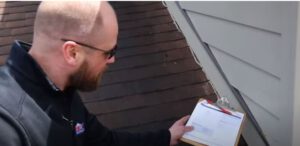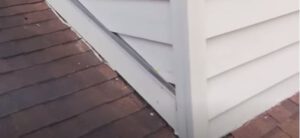 Your roof acts as the frontline soldier, protecting your home from diverse weather conditions and external factors. Regular inspections are critical to ensure its optimal condition, but how often should you inspect your roof for damage? This article provides a comprehensive guide to roof inspection frequency.
Your roof acts as the frontline soldier, protecting your home from diverse weather conditions and external factors. Regular inspections are critical to ensure its optimal condition, but how often should you inspect your roof for damage? This article provides a comprehensive guide to roof inspection frequency.
Annual Inspections
As a general rule, homeowners should perform a basic roof inspection at least once a year. This practice helps to identify minor issues such as loose or missing shingles, damaged flashing, or signs of wear and tear. Early detection of these problems allows for timely repairs, extending the lifespan of your roof and saving you from costly replacements.
When scheduling your annual inspection, try to pick a time when the weather is mild and clear. This will make it easier for you to identify any potential problems from the ground or through binoculars without having to climb onto the roof.
Twice-Annual Inspections For High-Risk Homes
If your home is located in an area prone to extreme weather or in a location with a lot of tree cover, you should consider scheduling more frequent inspections. The extra visits will enable your roofing contractor to identify any damage due to wind, hail or falling branches before it has the chance to cause extensive damage.
If your home is located in an area that experiences seasonal storms such as hurricanes or tornadoes, it’s essential that you get twice-annual inspections. This will help you stay ahead of any potential roof damage caused by severe weather and allow your roofing contractor to repair any issues before they become serious problems.
Repair Versus Replacement
 When it comes time for a roof inspection, many homeowners are unsure whether they need repair work or a full replacement. Getting an inspection twice a year can give your roofing contractor the chance to get ahead of any serious damage and ensure that you don’t spend more money than necessary replacing your entire roof if just minor repairs are needed.
When it comes time for a roof inspection, many homeowners are unsure whether they need repair work or a full replacement. Getting an inspection twice a year can give your roofing contractor the chance to get ahead of any serious damage and ensure that you don’t spend more money than necessary replacing your entire roof if just minor repairs are needed.
An experienced contractor can inspect the shingles, flashing, gutters, and other components of your roof to determine whether repair work or a complete replacement is the best course of action. Oftentimes, small repairs can extend the life of your roof for many years, saving you money in the long run.
Post-Extreme Weather Inspections
Apart from annual check-ups, you should inspect your roof after every instance of extreme weather such as heavy rain, hailstorms, high winds, or snowstorms. These weather events can inflict significant damage to your roof, leading to leaks or structural issues. Immediate post-storm inspections allow for the prompt identification and repair of any inflicted damage, mitigating further complications.
Seasonal Inspections
Consider a thorough roof inspection with the change of major seasons, particularly as you transition from autumn to winter and from winter to spring. In autumn, clearing gutters and removing leaves or other debris prevents water accumulation that can lead to roof damage. A spring inspection can help identify any damage caused during the winter and prepare the roof for summer heat.
Professional Inspections Every 3-5 Years
While homeowners can perform basic inspections, it’s recommended to hire professionals every 3 to 5 years for a thorough inspection. Professionals can spot subtle signs of damage and potential weak spots that an untrained eye might miss. This period could be shortened for older roofs, which are more prone to wear and tear.
Signs That Prompt Immediate Inspection
Certain signs warrant immediate inspection regardless of the schedule. These include water stains on your ceilings or walls, shingles in your yard, a sudden spike in energy bills (indicating possible insulation problems), or if you notice sagging or signs of structural stress.
Other signs that may not be as obvious are small bulges or patches on the roof that could indicate water damage. You should also look out for signs of algae, mold, or rot, which can all compromise the integrity of your roof and lead to costly repairs later on. If any of these signs appear, get in touch with a professional right away.
Conclusion
Regular inspections are crucial for maintaining the longevity and effectiveness of your roof. An annual inspection, a check after extreme weather, seasonal assessments, and a professional inspection every 3 to 5 years form an optimal schedule. Remember, the cost of a regular inspection is a small price to pay compared to the high expense of extensive roof repairs or replacement. In all instances, safety should be your priority. If you’re uncomfortable or unsure about performing an inspection yourself, hiring a professional is always a wise decision.